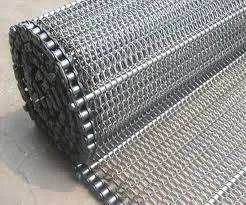-
+86 15030157877
-
sales@galvanizedmetalmesh.com
Ноя . 19, 2024 03:59 Back to list
Production Facilities for Barbed Wire Fencing Solutions and Innovations Worldwide
The Evolution and Impact of Barbed Fence Wire Factories
Barbed wire has long been a significant component of agricultural, military, and commercial fencing applications. Its invention in the late 19th century revolutionized the way land was enclosed and protected, rendering conventional fencing methods obsolete. Today, barbed wire remains an essential product manufactured in various factories around the world. This article explores the history, manufacturing process, and contemporary significance of barbed fence wire factories.
Historical Background
The genesis of barbed wire can be traced back to 1873, when Joseph Glidden, an American inventor, patented a design that featured twisted strands with sharp barbs. The adaptability and effectiveness of this simple yet innovative solution made it a game-changer for ranchers and farmers, especially in the vast open spaces of the American West. Before its invention, enclosures were built using wooden posts and railings, which were not only expensive but also labor-intensive to maintain. Barbed wire allowed for more efficient management of livestock and property boundaries, drastically changing the landscape of agriculture.
Manufacturing Process
Barbed wire is produced through a systematic manufacturing process that includes several stages, from selecting raw materials to packaging the final product. The primary raw material used in barbed wire production is high-carbon steel wire, chosen for its strength and durability.
1. Wire Drawing The production begins with wire drawing, where steel rods are pulled through draw plates to form wire of desired thickness. This step increases the tensile strength of the wire.
2. Annealing After drawing, the wire is often subjected to an annealing process. Heating the wire makes it more pliable and easier to work with, reducing the risk of breakage during the barbing process.
3. Barbing The next stage involves creating the barbs. This is typically accomplished using machines that twist the wire around a core wire, locking the barbs in place. Depending on the design, the size and spacing of the barbs can vary, impacting the wire's effectiveness for different applications.
barbed fence wire factories

4. Coating To enhance corrosion resistance, many manufacturers apply a protective coating to the wire, such as galvanization, which involves coating the steel with zinc. This step significantly prolongs the life of the wire, making it suitable for outdoor use in various climates.
5. Coiling and Packaging Once the wire is fully assembled, it is coiled into rolls and packaged for distribution. Quality control checks are performed to ensure that the wire meets industry standards before it is shipped to retailers or directly to consumers.
Economic Impact
Barbed fence wire factories play a critical role in the economy, providing raw materials for a variety of industries, including agriculture, construction, and security. The demand for fencing solutions has surged due to urbanization, land development, and the increasing need for security in both residential and commercial sectors. As a result, factories have had to adopt modern technologies to increase efficiency and reduce costs.
In regions with a strong agricultural presence, barbed wire remains a staple. Farmers often rely on it to manage their livestock and protect their crops from intruders. The military, too, utilizes barbed wire for security and encirclement purposes, adapting designs to meet specific operational requirements.
Environmental Considerations
With the growing awareness of environmental issues, some barbed wire manufacturers are exploring sustainable practices. This includes using recycled materials, reducing energy consumption during production, and minimizing waste. By implementing eco-friendly practices, factories can contribute to sustainability efforts while maintaining profitability.
Conclusion
Barbed fence wire factories serve as a testament to innovation in the fencing industry, representing over a century of development aimed at enhancing the protection and management of land and livestock. The production process, rooted in historical significance, continues to evolve with advancements in technology and growing demand. These factories not only provide essential products for various sectors but also adapt to contemporary economic and environmental challenges. As society progresses, the importance of barbed wire and its manufacturing will continue to play a vital role in securing our spaces.
-
Welded Gabion Solutions: Durable & AI-Enhanced Designs
NewsAug.01,2025
-
Premium Welded Gabion Mesh | Robust & Eco-Friendly
NewsJul.31,2025
-
Premium Eco-Friendly Roof Tiles | Affordable & Durable
NewsJul.31,2025
-
Premium Roof Tiles for Durable & Stylish Roofing Solutions
NewsJul.30,2025
-
High-Quality Roof Tiles for Durable & Stylish Roofing Solutions
NewsJul.29,2025
-
High Quality Square Wire Mesh Manufacturer & Supplier for Wholesale
NewsJul.29,2025



